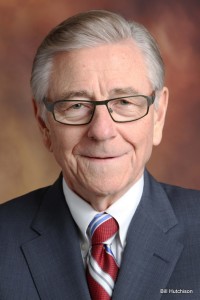Guest article EY | From smart to best: Creating the digital nervous systems our cities need for a sustainable future
Urban planners around the world are striving to move their cities from ‘smart’ to ‘best’, writes Bill Hutchison, Executive Director of the EY Center for Smart City Innovation.
Maybe you already know that the top 600 cities worldwide account for more than 60% of global GDP. But did you know that, by 2025, one in three urban centers in the developed world and one in 20 in emerging markets that were on the list in 2007 will no longer make the top 600? That’s how fast things are changing. And whether your city is able to retain its place among the elite, or make its first appearance on the list, depends on the strategies it adopts.
Cities are a primary driver of economic growth, innovation and opportunity. They are magnets for skilled and educated workers; gateways for new immigrants; centers of business and financial capital, and the focal points of global commerce. What’s more, they house the infrastructure assets and major institutions that power regional prosperity and the nation’s quality of life. So when you want to strengthen a country’s economy and competitiveness, you start with its cities.
Yet everywhere we look, the scale and pace of urbanization is straining physical infrastructure, fiscal capacity and natural resources. Many institutions and governance structures simply lack the capacity and flexibility to respond to such rapid growth.
More and more cities are now waking up to the problem and exploring the smart city or intelligent community concept. By creating a digital ‘nervous system’ and strategically exploiting the vast amounts of data such systems generate, smart cities can make buildings more efficient, reduce energy consumption and waste, and make better use of renewable energy. They can manage traffic intelligently, monitor how infrastructure performs, deliver services more efficiently, and enhance citizens’ access to government.
There is no single best model; each community has a unique history and challenges. But successful strategies share many common elements, and communities can learn enormous amounts from each other’s successes and failures. We will explore some of these ideas at our conference program at CODE_n, CeBIT – I look forward to seeing you there.
 About the author: For the past 20 years Bill Hutchison has been leading the design and implementation of award-winning smart cities, from Toronto to Singapore to Astana, the capital city of Kazakhstan. They include the $34 billion Waterfront Toronto project, one of the world’s largest urban revitalization schemes, which has won more than 60 awards for economic, environmental and social performance. He will be speaking at CODE_N, CeBIT on Monday 16 March.
About the author: For the past 20 years Bill Hutchison has been leading the design and implementation of award-winning smart cities, from Toronto to Singapore to Astana, the capital city of Kazakhstan. They include the $34 billion Waterfront Toronto project, one of the world’s largest urban revitalization schemes, which has won more than 60 awards for economic, environmental and social performance. He will be speaking at CODE_N, CeBIT on Monday 16 March.
You can also visit www.ey.com/code-n for more information.






Write a comment